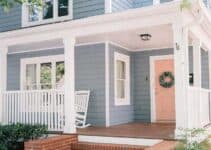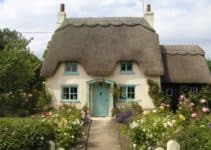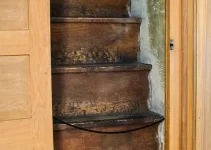There are few things more quintessentially English cottage than thatched roofs and wood burning stoves.
Putting a stove in a building with a straw roof might sound like an accident waiting to happen, but this begs the question, can you have a wood burner in a thatched cottage? There are no laws around having a wood burner in a thatched cottage. In short, it’s perfectly legal to install a fire in your home, providing any new models comply with the Clean Air Act of 2022.
Luckily, this says nothing about thatched cottages and wood burners.
However, just because you can doesn’t mean you should. In this article, we’ll look at whether having a wood burner in your thatched cottage is actually a good idea.
Wood Burners and Thatched Cottages
The modifications to the Clean Air Act plan to cut down on the most polluting models of wood burning stoves. However, this doesn’t mean they’re completely banned; many stoves are efficient enough that they meet current (and future) guidelines.
Importantly, there is nothing in the regulations about using a wood burner in a thatched cottage. This instead comes down to personal preference and common sense.
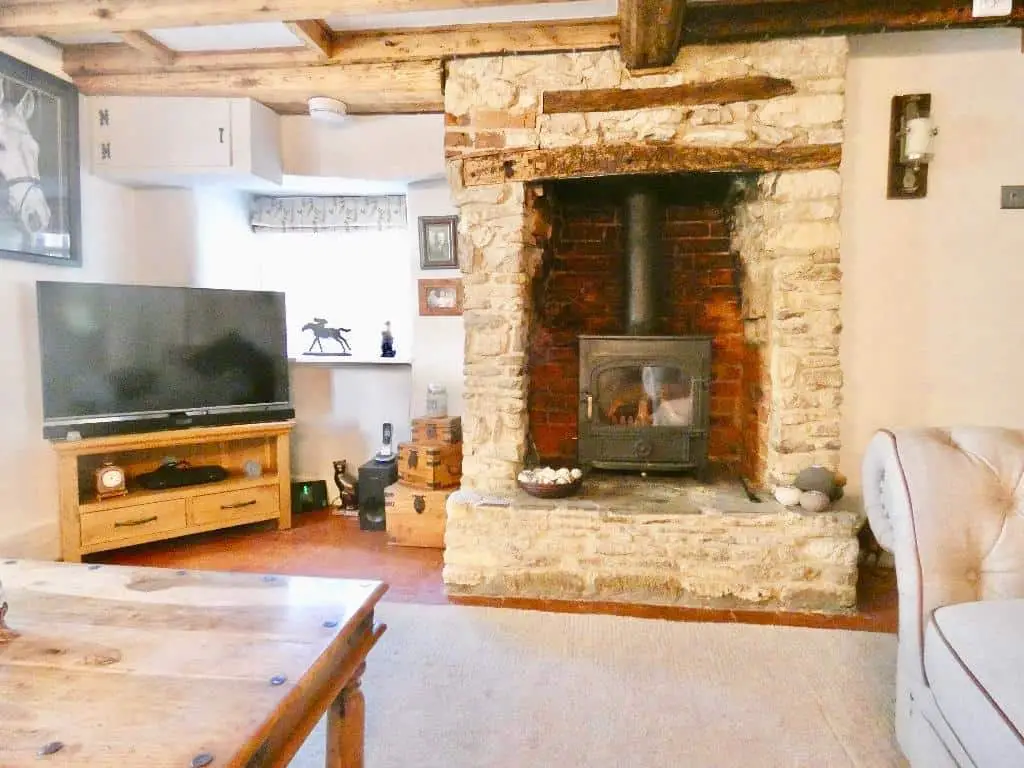
The closest thing we have to regulations is a 3-year survey conducted by Historic England based on different theories for the spread of fires in thatched cottages.
Unsurprisingly, although thatched cottages are a good investment, they are more prone to fires caused by wood burners because their roofs are made from incredibly flammable materials.
Historic England’s survey tested different theories, including ones about heat transfer and flammable gases. The conclusions are that high-energy sparks ejected at force from the chimney are the main cause of fire, closely followed by gases escaping into the attic through chimney defects.
Similarly, it found that flue insulation is vital, despite heat transfer not being a main cause of fire. Instead, insulation can act as another barrier for gases that could otherwise escape into the attic. The survey also found that devices such as spark arrestors have no impact, so don’t waste your money on these.
It’ll probably come as no surprise, but Historic England recommends not having a wood burning or multi-fuel stove in a thatched cottage. It was obligated to release this advice because it found numerous causes of fires related to having a stove in a thatched cottage.
Can You Have an Open Fire in a Thatched House?
As with a wood burner, there are no laws preventing you from having an open fire in a thatched house. While the risk is marginally higher of a fire starting in the room with the fireplace, there isn’t any greater risk of the thatch catching fire from the chimney.
In fact, a closed stove is probably a higher risk because its fire burns hotter and more efficiently.
So, if you want either an open fire or a wood burner in your thatched cottage, the law is in your favour. However, insurance probably won’t be.
Thatched cottage house insurance is typically high because of the nature of the building, but you can expect a big jump in price if you have any kind of fire running.

How to Safely Operate a Wood Burner in a Thatched Cottage
Having a wood burning stove in your home is perfect for making it cosy during the winter. For thatched cottage owners, there are some important steps to take beyond the standard chimney cleaning.
Follow these recommendations to reduce the chances of fire in your thatched cottage from a wood burning stove.
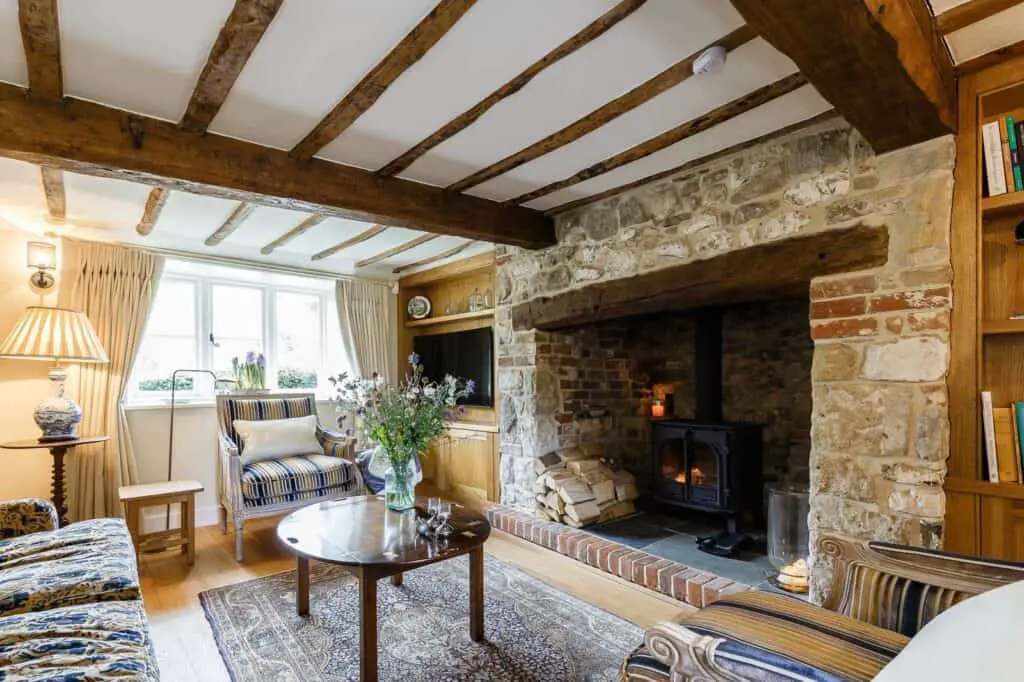
1. Chimney inspection
You probably already know that you should get your chimney swept at least once a year. But if you haven’t lit a fire in your home yet, it’s vital that you get an endoscopic inspection, especially if it’s an old building.
Simply put, it involves someone running a camera up the chimney to look for damage. It’s particularly important to look for cracks where the chimney meets the thatch.
If you see any, get them repaired before you even think of lighting a fire.
2. Chimney height
Make sure your chimney is a sufficient height above the thatch. There aren’t any laws on this, but Building Regulations does offer some advice about appropriate chimney height.
A good rule is around 1.8m above the top of the thatch.
This allows enough distance for sparks and embers to burn out before they reach the thatch. Most sparks are low in energy, but sometimes big ones will shoot out, and these are the ones you need to watch out for.
Also, having a chimney that extends above the roof will help cool gases and, potentially, put out sparks before they even escape. You could extend the chimney using brick or by installing a metal addition.
Note, though, that you may be limited in what you can do based on whether your building is listed. Check with your local planning office for more information.
3. Bird guard
A chimney bird guard is essentially a bit of mesh that sits across the top of your chimney. It stops birds from getting in and building nests, which can cause blockages and catch fire.
Historic England found that birds’ nests were a contributing factor to chimney fires.
Unfortunately, sweeping won’t help with this, as nesting season typically overlaps with stove season. So, get a guard installed; your chimney sweep, thatcher or roofer should be able to help.
4. Flue lining
A flue liner (also known as a chimney liner) is a metal tube that runs up the inside of the chimney. Its purpose is to physically isolate the fire from the surrounding chimney, which drastically reduces the chances of a fire.
It’s particularly useful in a thatched cottage because it reduces the chances of gases escaping into the attic and can be an alternative to repairing damage. That said, it’s still worth repairing damage if you want to be completely safe.
Many flue liners are double-walled steel. This design helps reduce the rate of heat transfer through the chimney.
While Historic England debunked this as a theory for fires in thatched cottages, it’s always better to be safe than sorry.
As with the chimney extension, there might be limitations for flue liners in listed buildings – it’ll mostly depend on how easy it is to install. Providing there are no structural alterations required, it should be fine.
5. Temperature gauge
Another useful device to install is a flue temperature gauge. It sits on the stove pipe to monitor the temperature of waste products entering the chimney.
If they’re too cool, soot and tar will collect in the chimney. Then, if it burns too hot, it can set fire to these deposits.
Adding a temperature gauge ensures you know whether the fire is operating at the correct temperature. Of course, it’s vital that everyone in the home knows what this is, so they can alert you to any changes that might increase the risk of fire.
Can You Have a Log Burner in a Thatched Cottage?
In summary, you can have a log burner in a thatched cottage. But operating a log burner in a thatched cottage requires more care and attention than in a tiled roof home. Along with following the best practices for stoves, you must take the extra steps listed above to reduce the chances of fire.
Of course, when it comes to installing fire-reduction systems, be sure to check with your planning office if your thatched cottage is listed. If you’re not allowed to install these measures, it might be best to forget about having a wood burner in your home.

